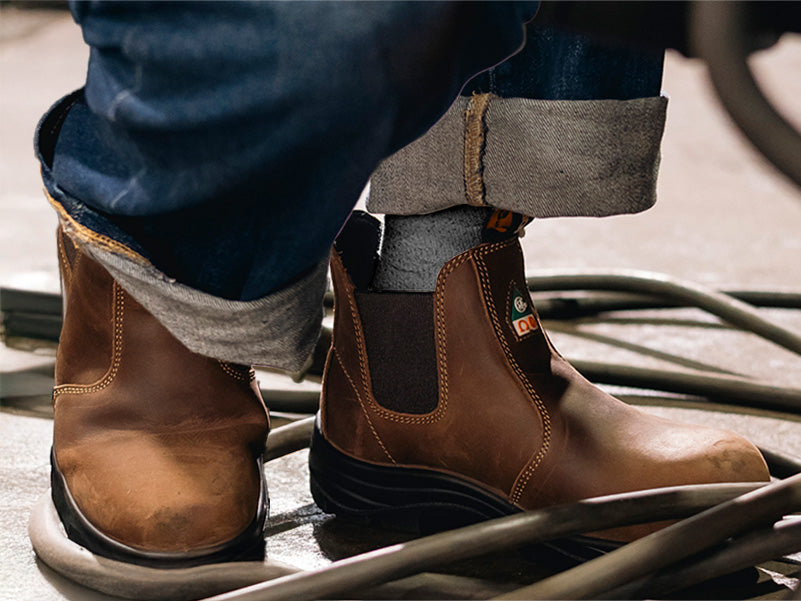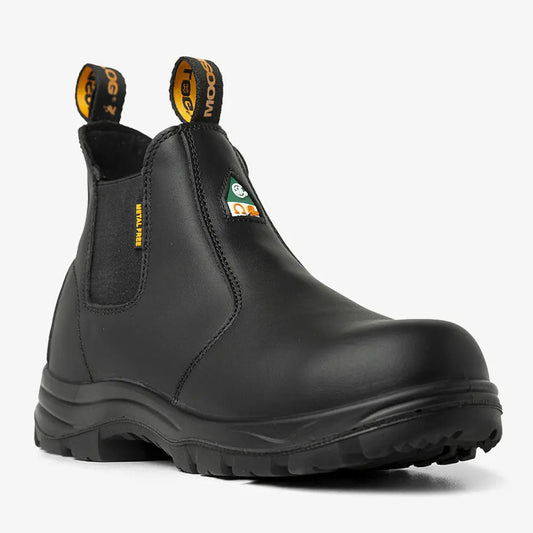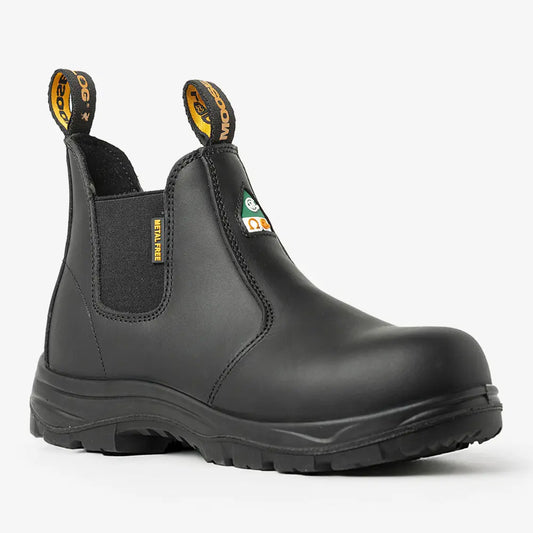
Understanding EH Rated Work Boots: Essential Safety for Hazardous Work Environments
Introduction
In industrial workplaces, safety is not just a precaution—it’s a necessity. Among the various risks faced by workers, one of the most dangerous is electrical shock. That’s where EH Rated Work Boots come into play. These boots are specifically designed to provide protection from electrical hazards, helping safeguard workers who may come into contact with live wires or energized equipment.
Whether you're working in construction, manufacturing, or utility services, understanding what EH rated boots are, how they function, and what certifications they meet can help you choose the right gear to stay safe.
What Does "EH Rated" Mean?
The "EH" in EH rated work boots stands for "Electrical Hazard." These boots are tested and certified to meet standards that reduce the risk of electric shock. They serve as a secondary source of electrical protection, meaning they're not a substitute for insulating tools or rubber gloves, but they add an important layer of defense.
EH boots are designed with non-conductive soles and heels, which can withstand up to 18,000 volts under dry conditions without transmitting the current to the wearer. This is especially critical for electricians, linemen, and anyone working around high-voltage environments.
Why Are EH Rated Boots Necessary?
Electrical currents can be deadly. Accidental contact with a live wire or equipment can result in burns, nerve damage, cardiac arrest, or even death. In environments where workers are constantly surrounded by electrical components, wearing EH rated boots is a critical safety measure.
Not only do these boots protect workers physically, but they also fulfill OSHA (Occupational Safety and Health Administration) requirements for personal protective equipment. Many employers also require EH rated footwear to comply with workplace safety protocols.
Who Should Wear EH Rated Work Boots?
EH rated boots are essential for workers in industries such as:
- Electrical utilities
- Power plants
- Construction
- Manufacturing facilities
- Maintenance and repair crews
- HVAC technicians
Anyone working in a setting where there’s a risk of stepping on energized conductors, exposed wiring, or live circuits can benefit from the protection EH boots offer.
CSA and ASTM Standards
EH rated work boots must meet specific testing criteria to earn their classification. In North America, the two main certification bodies are:
- ASTM (American Society for Testing and Materials) – EH boots must pass ASTM F2413 standards, which test their ability to resist electrical currents under dry conditions.
- CSA (Canadian Standards Association) – In Canada, CSA Z195 standards regulate safety footwear, including electrical hazard protection.
These standards ensure that EH boots provide not only electrical resistance but also puncture-resistant protection, which is essential for environments with sharp metal fragments or nails.
You can read more about these standards on the official websites:
ASTM International
Canadian Standards Association (CSA)
What Makes EH Rated Boots Different?
EH boots differ from standard work boots in several key ways:
- Non-conductive materials: EH boots use insulating materials in the sole, heel, and sometimes even the upper construction to minimize the risk of electricity flowing through the body.
- Thick rubber outsoles: These outsoles provide a barrier between the foot and the ground, essential when standing on potentially energized surfaces.
- Puncture-resistant plates: To prevent electric current from reaching your foot through metal shards or nails, EH boots also incorporate puncture-resistant midsoles.
- Compliance labeling: Legitimate EH rated boots will include a label or tag inside the boot stating the ASTM or CSA standard they comply with.
Common Misconceptions About EH Rated Work Boots
“They make you immune to electrical shock.”
False. EH boots are designed as a secondary protection measure. You should still follow all lockout/tagout procedures and wear additional PPE.
“They work even when wet.”
False. EH boots are only tested under dry conditions. If you're working in wet environments, you'll need specialized dielectric footwear.
“All safety boots are EH rated.”
Not all safety boots meet EH standards. Always check the label and certification to confirm.
Choosing the Right EH Rated Work Boot
When shopping for EH rated boots, consider the following:
- Verify CSA or ASTM certification
- Ensure the boot offers puncture-resistant protection
- Evaluate comfort and fit for long hours of wear
- Choose a boot style (e.g., 6-inch, 8-inch, lace-up) that suits your work environment
Brands like MooseLog offer a wide selection of EH rated work boots that combine protection with lightweight comfort—perfect for demanding jobs.
Visit MooseLog.com to explore EH rated boots designed for safety, comfort, and performance.
Conclusion
EH rated work boots are an essential part of workplace safety for anyone exposed to electrical hazards. Understanding what EH means, who needs it, and how to identify compliant footwear can significantly reduce the risk of injury on the job.
Remember, safety begins from the ground up—and in this case, that means investing in the right pair of EH rated, puncture-resistant work boots.






